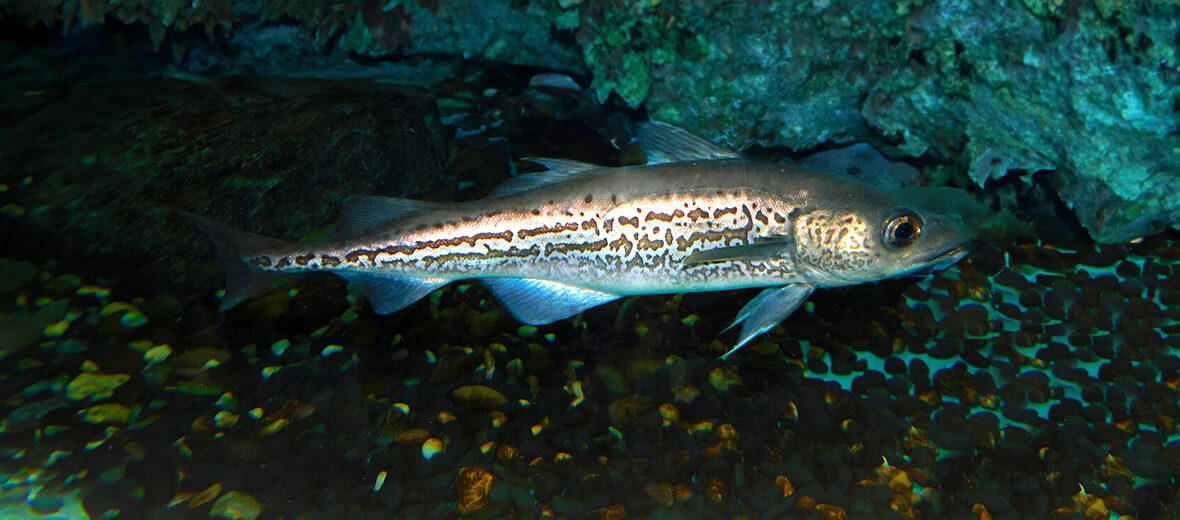
The Alaska pollock, aka walleye pollock, hails from the North Pacific Ocean, with the greatest populations being found in the Bering Sea. Pollocks are a member of the cod genus, Gadus. They only face 1 main threat… the threat of overfishing. However, that is enough. They are listed as Near Threatened by the IUCN, and their population trend is unknown at this time.
First the Stats…
Scientific name: Gadus chalcogrammus
Weight: Up to 35 lbs.
Length: Up to 3.5 feet
Lifespan: Up to 23 years
Now on to the Facts!
1.) They are a semi-pelagic (spend part of their lives in the open sea) schooling fish.
2.) The Norwegian pollock, a rather rare fish from the Norwegian Sea, is most likely the same species as the Alaska pollock. More research is needed to confirm this though.
3.) Their speckled coloring provides them much needed camouflage from predators, as they blend in with the sandy ocean floor.
4.) Juveniles feed on copepods, while adults feed mainly on krill.
5.) These fish display diel vertical migration, aka diurnal (active during the day) migration. This is where the fish will follow the migration patterns of their prey items, moving from deeper to shallower depths.
But wait, there’s more on the Alaska pollock!
6.) Each year up to 3,000,000 tons of Alaska pollock are caught from Alaska to northern Japan. Making them the largest remaining source of palatable fish in the world.
7.) From 2008 – 2010 in the Bering Sea fishing quotas were reduced by the Alaska Fisheries Science Center due to dramatic stock reductions.
Did you know…?
Alaska pollock have well-formed drumming muscles that they use to make sounds during courtship, like many other gadid species.
8.) In 2021, the MSC awarded the U.S. trade association’s Association of Genuine Alaska Pollock Producers, aka GAPP, and At-Sea Processors Association with the Ocean Champion Award which recognizes organizations for meeting MSC’s commitment to a healthier ocean and a more transparent supply chain.
9.) Compared to other species of cod and pollock, Alaska pollock has a lighter taste, whiter color, and a lower overall oil content.
10.) In Russia, pollock roe (eggs) is consumed as a sandwich spread. The substance, looking like liquid paste due to the small size of eggs, with oil added, is sold as a canned product.
But wait, there’s still more on the Alaska pollock!
11.) In a single season, a female Alaska pollock can produce up to 1,000,000 eggs.
12.) Spawning takes place between April – June.
13.) Eggs hatch in up to 30 days and larvae measure only up to .70 inch when newly hatched.
14.) Sea lions, seals, orcas, sea birds, and larger fish all prey on pollocks.
Now a Short Alaska Pollock Video!
Be sure to share & comment below! Also, check out the Critter Science YouTube channel. Videos added regularly!
Want to suggest a critter for me to write about? Let me know here.
Some source material acquired from: Wikipedia & IUCN
Photo credit: George Berninger Jr.




